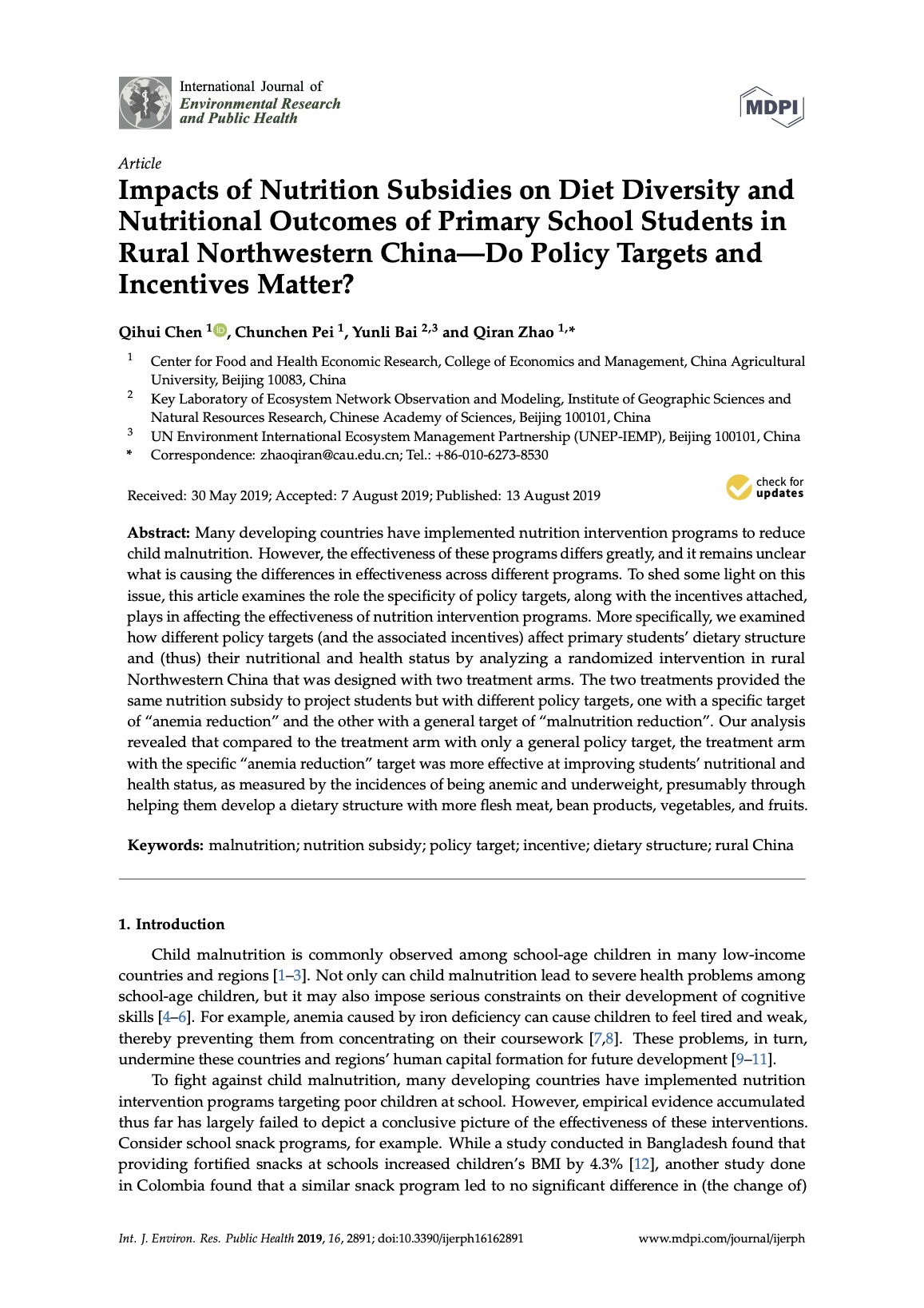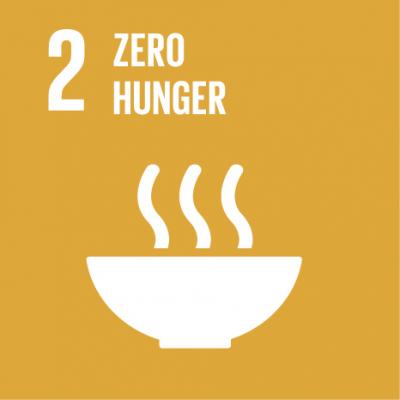Many developing countries have implemented nutrition intervention programs to reduce child malnutrition. However, the effectiveness of these programs differs greatly, and it remains unclear what is causing the differences in effectiveness across different programs. To shed some light on this issue, this article examines the role the specificity of policy targets, along with the incentives attached, plays in affecting the effectiveness of nutrition intervention programs. More specifically, we examined how different policy targets (and the associated incentives) affect primary students’ dietary structure and (thus) their nutritional and health status by analyzing a randomized intervention in rural Northwestern China that was designed with two treatment arms. The two treatments provided the same nutrition subsidy to project students but with different policy targets, one with a specific target of “anemia reduction” and the other with a general target of “malnutrition reduction”. Our analysis revealed that compared to the treatment arm with only a general policy target, the treatment arm with the specific “anemia reduction” target was more effective at improving students’ nutritional and health status, as measured by the incidences of being anemic and underweight, presumably through helping them develop a dietary structure with more flesh meat, bean products, vegetables, and fruits.
Keywords: malnutrition; nutrition subsidy; policy target; incentive; dietary structure; rural China
Corresponding author: Qiran Zhao, zhaoqiran@cau.edu.cn





